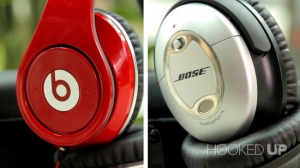Battle Bots has got to be one of the more exciting shows iv’e ever watched on tv during my childhood. It had all the factors that make a entertaining series, character development, action, mayhem, and of course the most important, robots beating the shit out of each other. Words cant describe how envious I was at a young age of the drivers that used to control these battle machines around the arena. I watched every episode and even studied up on the machines and what made some better than others on the battle field. Despite this fact I had a few pet peeves about the show, mainly in the way it was run by the shows sponsor and provider, the Discovery network.
Discovery Channel has always played my favorite shows, I love the educational aspect of many of the shows but also the entertainment value is far beyond anything I can find MTV or the History Channel now a days but even the Discovery channel still has its flaws that bothered me about their programs. While not completely selling out like the History Channel has to shitty shows and advertisements popping up all over the screen, the Discovery has still lost grips on its roots of being a truly educational network. (Disclaimer: this is my personal opinion and does not reflect the views of the History Channel. but we can all agree Ancient Aliens is shit…) One of the first times I noticed the downhill trend, caused by I can only assume was the higher ups at Discovery, was the amount of adds played during Battle Bots. Adds are a distraction especially when they appear in the corner of the screen during the actual programming show. This is what Battle Bots did and what pissed me off the most. I naturally understand the need for a show or network to gain revenue from advertisers but to compromise the actual show that views are tuning in for seems like the wrong way to go about it in my mind.
Although I have not read into the reasons for these adds rudely interrupting my epic show about robots, I can only assume it was the networks decision since they control all decisions about programs on their networks and therefore for the rest of this post I will blindly attack them for interrupting my entertainment. Battle Bots being a high paced, action stuffed TV show needs your constant attention to follow who’s in the lead or who’s about to be crushed by some robot with a hammer. I have no interest in some new blood pressure drug, or washed up childhood star appearing in a TV show about vampires and leprechauns. Basically the point I’m trying to get at is, Discovery Network, don’t throw some small text and graphics on the lower right hand corner of my TV screen while I’m trying to enjoy one of your programs.



